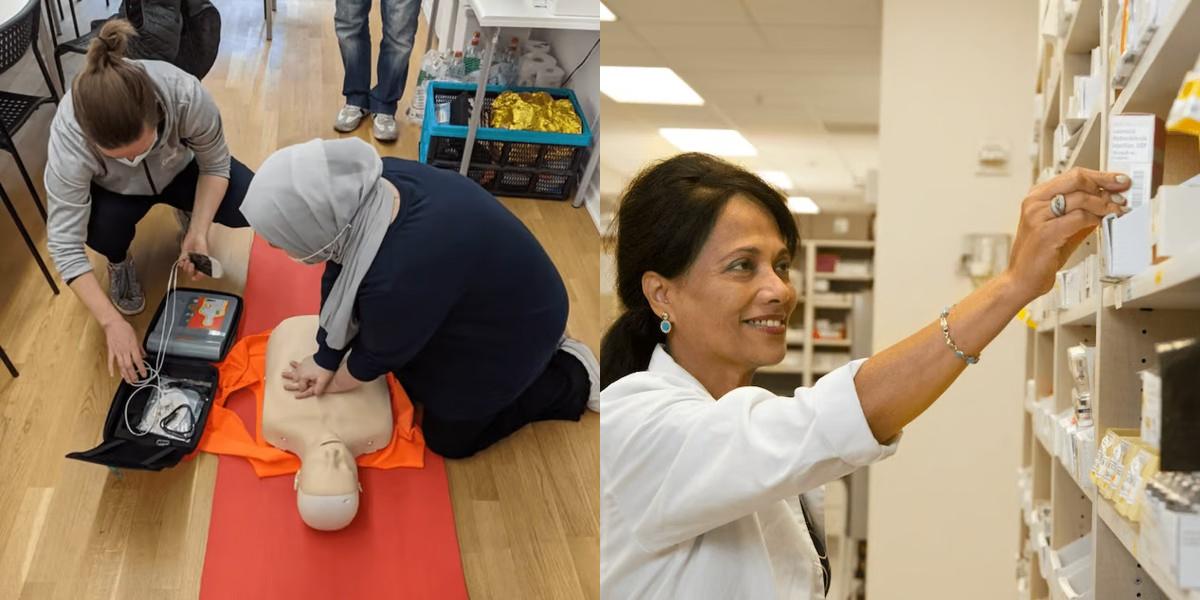CPR-BLS vs Pharmacy Technician

Key Points:
- CPR-BLS providers give emergency care, while Pharmacy Technicians assist pharmacists in drug preparation and customer service.
- CPR-BLS pay varies, Pharmacy Technicians earn a steady wage, often with benefits.
- CPR-BLS roles are in high demand, Pharmacy Technician jobs are widely available in healthcare settings.
- CPR-BLS training is often short-term and in-person, Pharmacy Technician training can be online or in-person.
- CPR-BLS training is generally less expensive and shorter than Pharmacy Technician programs.
Vocational training programs provide individuals with the skills and knowledge necessary to enter a specific career field. These programs are often shorter in duration compared to traditional four-year degree programs, making them a popular choice for individuals who want to enter the workforce quickly. CPR-BLS and Pharmacy Technician training are just two examples of the many vocational programs available.
CPR-BLS vs Pharmacy Technician: Education and Training
To become a CPR-BLS professional, individuals typically need to complete a short training program that focuses on emergency response and basic life support techniques. These programs are often offered by healthcare organizations, community colleges, and the American Heart Association.
Pharmacy Technician training programs, on the other hand, are more comprehensive and cover a wide range of topics related to medication management. These programs can last anywhere from several months to a year and are often offered by vocational schools, community colleges, and online institutions.
CPR-BLS vs Pharmacy Technician: Career Outlook and Salary
When considering a vocational training program, it's important to understand the career outlook and salary potential for each profession.
CPR-BLS Career Outlook: The demand for CPR-BLS professionals is expected to remain steady in the coming years. As healthcare continues to be a growing industry, the need for individuals trained in emergency response will remain high. CPR-BLS professionals can find employment in a variety of settings, including hospitals, schools, and public safety agencies.
CPR-BLS Salary: The salary for CPR-BLS professionals can vary depending on factors such as location, experience, and the specific industry. According to the Bureau of Labor Statistics, the median annual wage for emergency medical technicians and paramedics, which includes CPR-BLS professionals, was $35,400 in May 2020.
Pharmacy Technician Career Outlook: The demand for Pharmacy Technicians is expected to grow in the coming years. As the population continues to age, the need for medication management and prescription filling will increase. Pharmacy Technicians can find employment in a variety of settings, including retail pharmacies, hospitals, and long-term care facilities.
Pharmacy Technician Salary: The salary for Pharmacy Technicians can vary depending on factors such as location, experience, and the specific industry. According to the Bureau of Labor Statistics, the median annual wage for Pharmacy Technicians was $34,020 in May 2020.
Final Thoughts
Both CPR-BLS and Pharmacy Technician training programs offer unique career opportunities in the healthcare industry. While CPR-BLS professionals focus on emergency response and basic life support techniques, Pharmacy Technicians play a crucial role in medication management and customer service. Ultimately, the choice between these two professions depends on individual interests, career goals, and the desired level of responsibility.
Dreambound's programs are accessible in various locations. To gather more information about these two vocations, check out:

Stephanie Dayak is the go-to person for everything related to automation and integrations at Dreambound. As a Certified Tax Technician turned tech whiz, her sharp eye for detail and passion for efficiency become evident in every project she undertakes. When not solving tech puzzles, she's out exploring the local food scene, cozying up with her dogs, or plugged into a thought-provoking podcast. She's an ardent believer in mixing fun with functionality!




